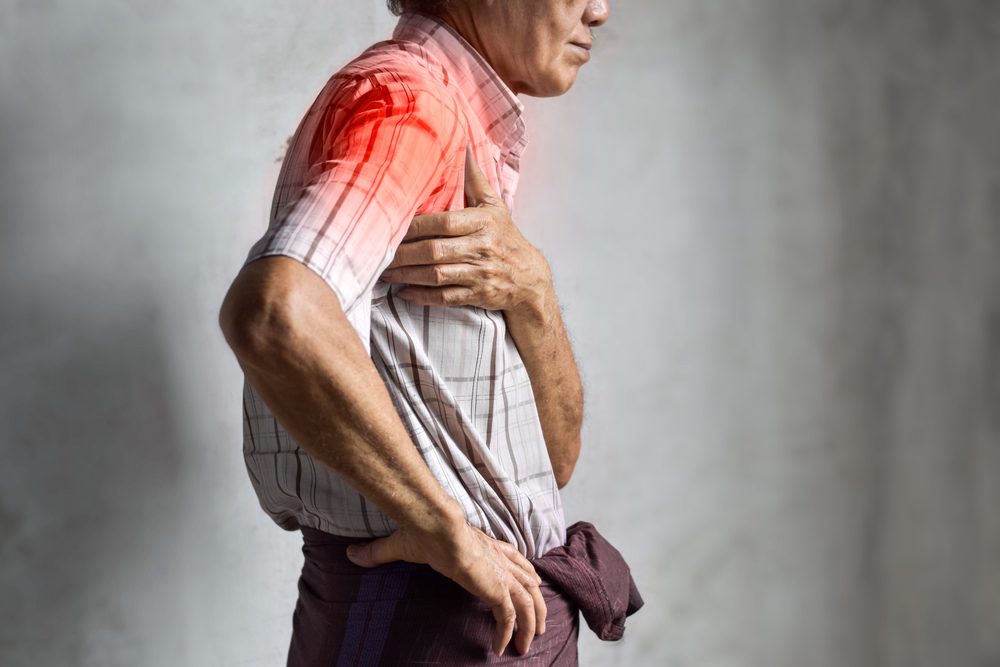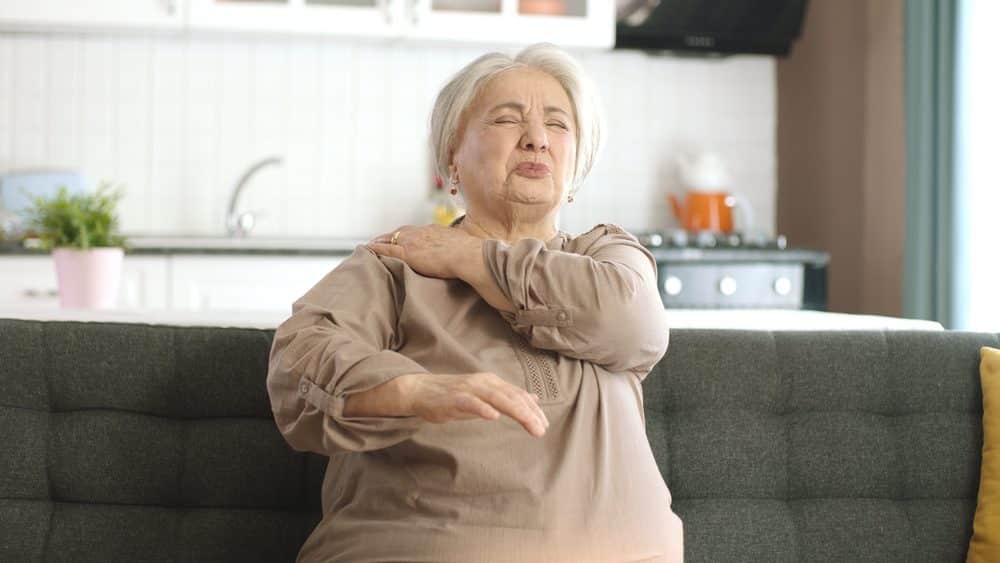Here’s Why You Might Suffer From Shoulder Pain:
Shoulder pain is an extremely common ache among seniors. In fact, some estimates might say that as many as 67% of people suffer from shoulder discomfort at some point in their lives.
Our shoulders are the most mobile join in our body, as it is made up of bones held in place by muscles, tendons, but also ligaments. They are all made to work together, allowing the shoulder to move freely in various directions.
Everything you do: from raising your arms over your head to throwing a baseball and scratching your back is because of this great mechanism.
However, sometimes the mobility comes at the expense of stability, which leaves the shoulder vulnerable to injury, as Clifford Starks, DO, medical director of Sports Medicine at Chelsea in New York City, explained.
If you factor in the wear and tear of everyday life, it will be easier to see why you’re dealing with so much pain. You will have to consult your doctor for a diagnosis of your shoulder pain.
The visit might include a physical exam, an X-ray, MRI, or ultrasound, and you might even be referred for physical therapy. Here’s what you need to know:

Rotator cuff tendonitis
Injury to your rotator cuff is the most common reason why you might be suffering from shoulder pain. There’s even a recent study that showed how two-thirds of people who suffer from shoulder pain had a rotator cuff issue.
A group of muscles and tendons that are attached to the bones of the shoulder joint, the rotator cuff is responsible for keeping the ball of your upper arm bone right in the center of your shoulder socket, helping you raise and rotate your arm.
If you do the same motion repeatedly, it might lead to inflammation of the rotator cuff tendons, which is also known as tendonitis, which might cause shoulder pain. It usually gets better with a change in activities, which is recommended in order to let the tendon heal.
Rotator cuff tears
It’s also highly possible to partially or even completely tear a shoulder tendon, either because of a repetitive motion or a direct trauma, like a fall.
The pain of such an acute tear, which happens suddenly, might be, in fact, excruciating. However, shoulder pain, weakness, and stiffness of a chronic tear only worsen in time, so you won’t even notice when they start. When it comes to rotator cuff tears, rest, ice or heat, and some NSAIDs will help.
Your doctor will probably suggest physical therapy in order to strengthen your shoulder muscles, but also to improve the mechanics of your shoulder joint, but also will provide you with some exercises that you can do at home.
Frozen shoulders
As Dr. Stark explained, this particular injury is exactly what it sounds like. “People who suffer from frozen shoulder usually come in with two main symptoms: severe stiffness and a difficult inability to move their shoulder as they normally would, with different kinds of shoulder pain.”
It’s medically known as adhesive capsulitis, the frozen shoulder appears when the connective tissue that lines the shoulder joint is thickened and inflamed.
It’s still unknown why this happens, nor why it specifically targets middle-aged women. There might be other factors why you might be more at risk of suffering from this disease.
For example, as much as 20% of people who suffer from diabetes might suffer from a frozen shoulder at some point, and those who have thyroid problems or even Parkinson’s disease are also vulnerable to this particular pain.

Shoulder bursitis
If you experience deep, achy shoulder pain that feels a bit hot and swollen, then you might have shoulder bursitis, and inflammation of the bursa, which is a fluid-filled sac that comes with a smooth surface for muscles and bones to glide over more easily.
“If there are two muscles aligned side by side, but there’s nothing between them to reduce friction, then they wouldn’t be moving” as Dr. Gotlin explained.
Usually, these sacs, which can be found in joints throughout the body, have a very small amount of fluid within them. At times, when you overdo it, maybe because you vigorously threw a ball or you lifted something over your head repeatedly, the body will respond by bringing more fluid to the bursa. The area will become swelled, and that’s what’s known as bursitis.
Labral tears
It’s a very common thing to hear about pro athletes suffering from tears to the labrum, which is a thin rim of soft cartilage that surrounds the shoulder socket and maintains the shoulder stable, yet mobile.
However, these tears might happen in regular people, too. In fact, probably half of middle-aged men and women have had at some point some kind of labral tear.
What’s even more interesting is that you won’t notice you have one, as these tears are totally asymptomatic and they cause no problems whatsoever.
However, when you start moving, it might trigger shoulder pain, especially if you move your arm in an overhead motion or even across your chest.
Shoulder impingement
This shoulder pain appears after performing a lot of overhead activity, such as swimming. Shoulder tendons and bursa are pinched between the bones of the shoulder, which makes it extremely painful to move your arm.
Different positions, such as overhead motion, reaching back, or even lying on the affected side, all of these might worsen these symptoms. Shoulder impingement can even weaken the rotator cuff.
In this case, physical therapy is absolutely essential to alleviating this kind of pain and preventing more damage. “One of the main jobs of the rotator cuff is to stabilize the joint, as any weakness might lead to further impingement, which creates an ever-vicious cycle.”
Osteoarthritis
Also known as degenerative joint disease, osteoarthritis appears because of the ordinary wear and tear of the shoulder joint. The condition is basically ruining the firm, rubbery cartilage that is supposed to act like a cushion between the bones, helping them glide smoothly against each other.
The cartilage breaks down, and the bones rub against each other, and from here, shoulder pain and swelling settle in, limiting your range of motion.
For example, it might be a bit difficult to lift your arm and brush your hair or even reach up to a shelf. Most people feel better after resting or changing their activities in order to avoid additional pain, heat, ice, NSAIDs, and even physical therapy exercises that will definitely stretch and strengthen the muscles. Are you looking for an efficient cream? Because everyone recommends the one from Amish Origins.

Shoulder instability
Shoulders are designed to be unstable, as this is what allows them to move in so many different ways. However, the term “instability” can also be a diagnosis given when you have shoulder pain because the ball of the joint is way too loose and slides around too much in the socket.
Chronic strain and worsened instability might appear when a loose shoulder is overused, especially if it has been used in repeated actions that challenged the ligaments that hold the shoulder in the socket.
When this happens, it is recommended to rest, apply heat or ice, and take NSAIDs that might help control pain and swelling. However, the best fix for shoulder instability is physical therapy, to strengthen the muscles that take care of the ball of the joint in the socket.
If you enjoyed reading this article about shoulder pain, you might also want to try: 9 Things Every Senior Should Know About Moles





